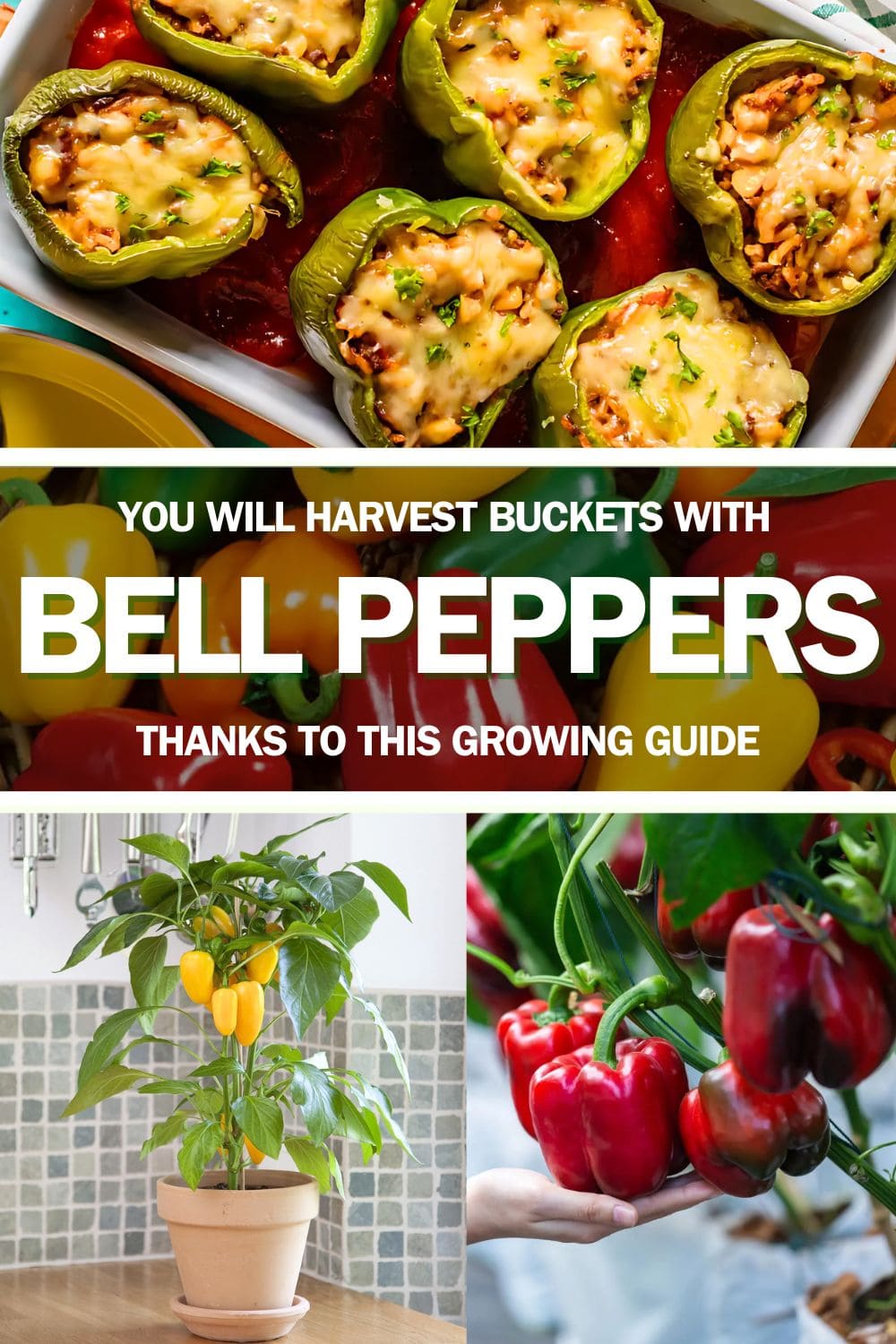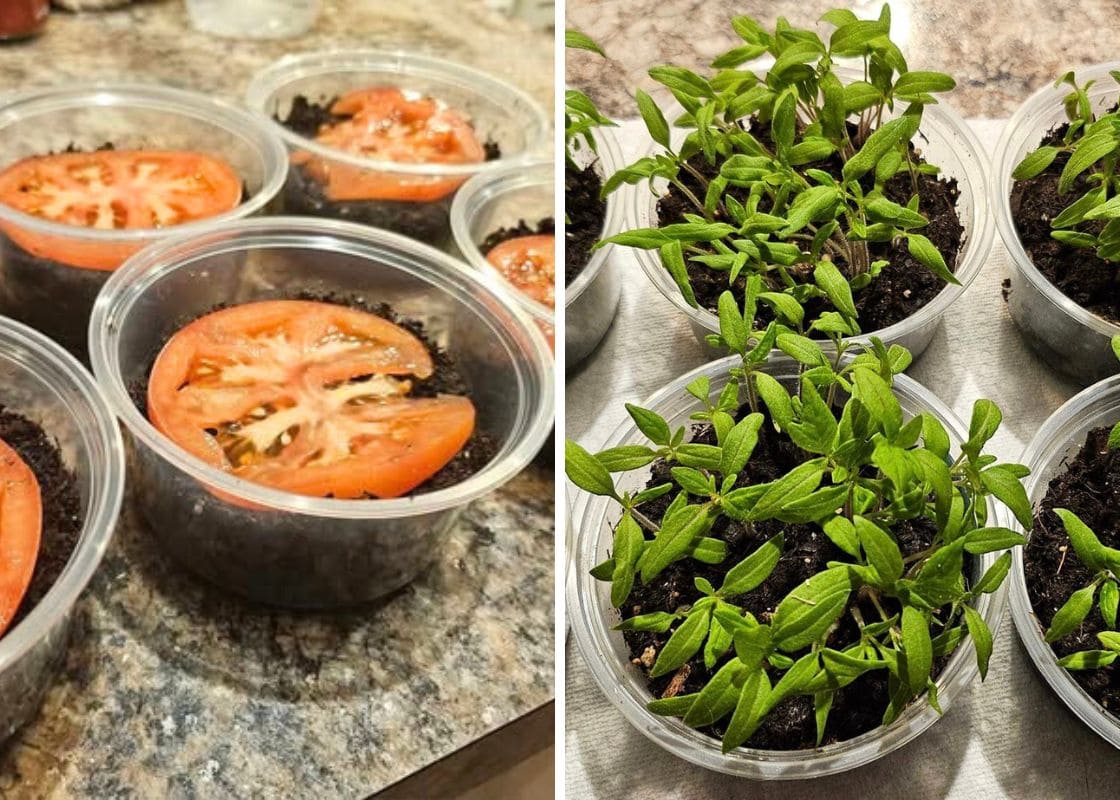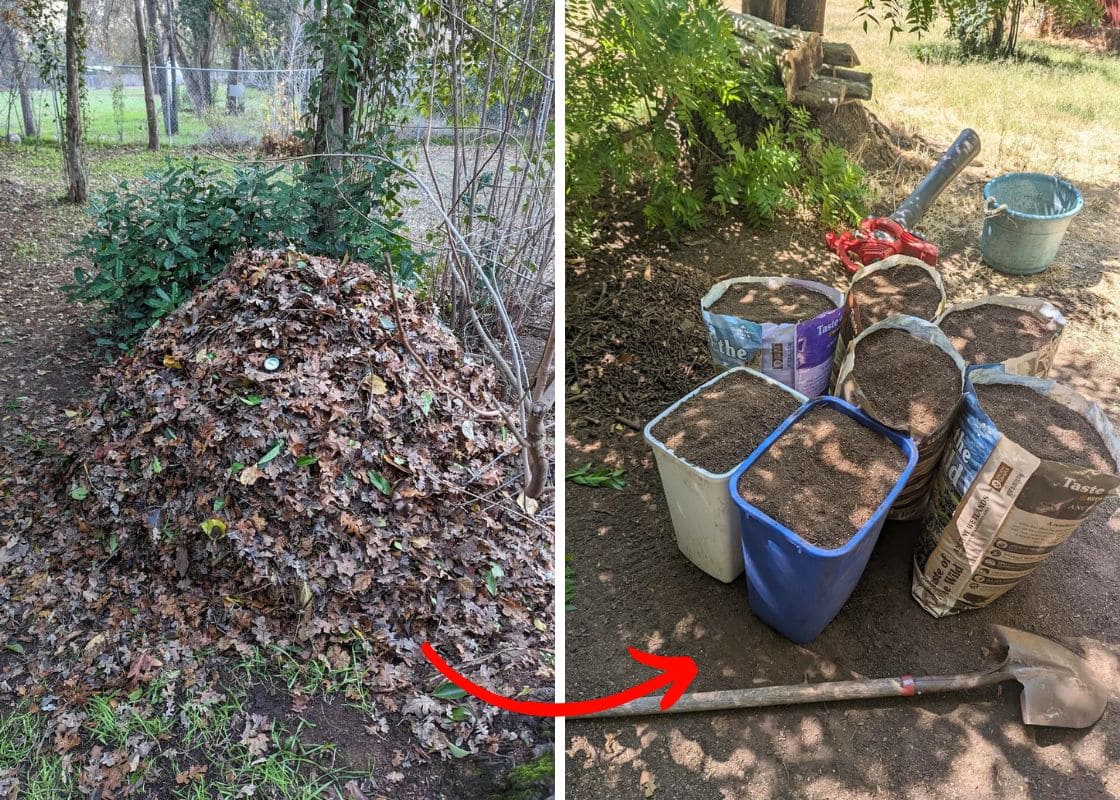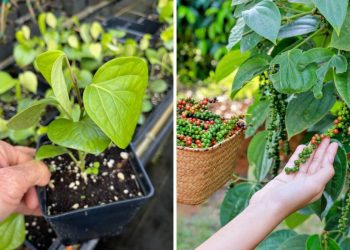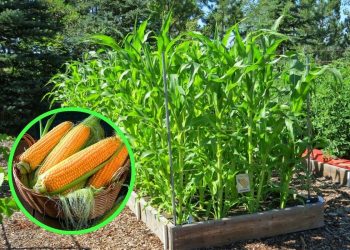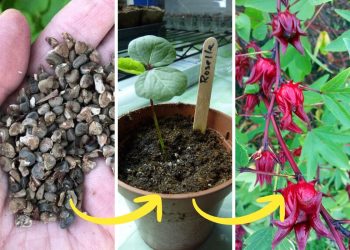Bell peppers are a garden favorite, offering vibrant colors and a crisp, sweet flavor that enhances countless dishes.
Growing your own bell peppers is incredibly rewarding, especially when you see those lush plants laden with juicy, colorful fruits.
Whether you’re a seasoned gardener or just starting out, planting bell peppers is an exciting endeavor that can yield bountiful harvests.
How to Grow Bell Peppers
Step 1: Preparation
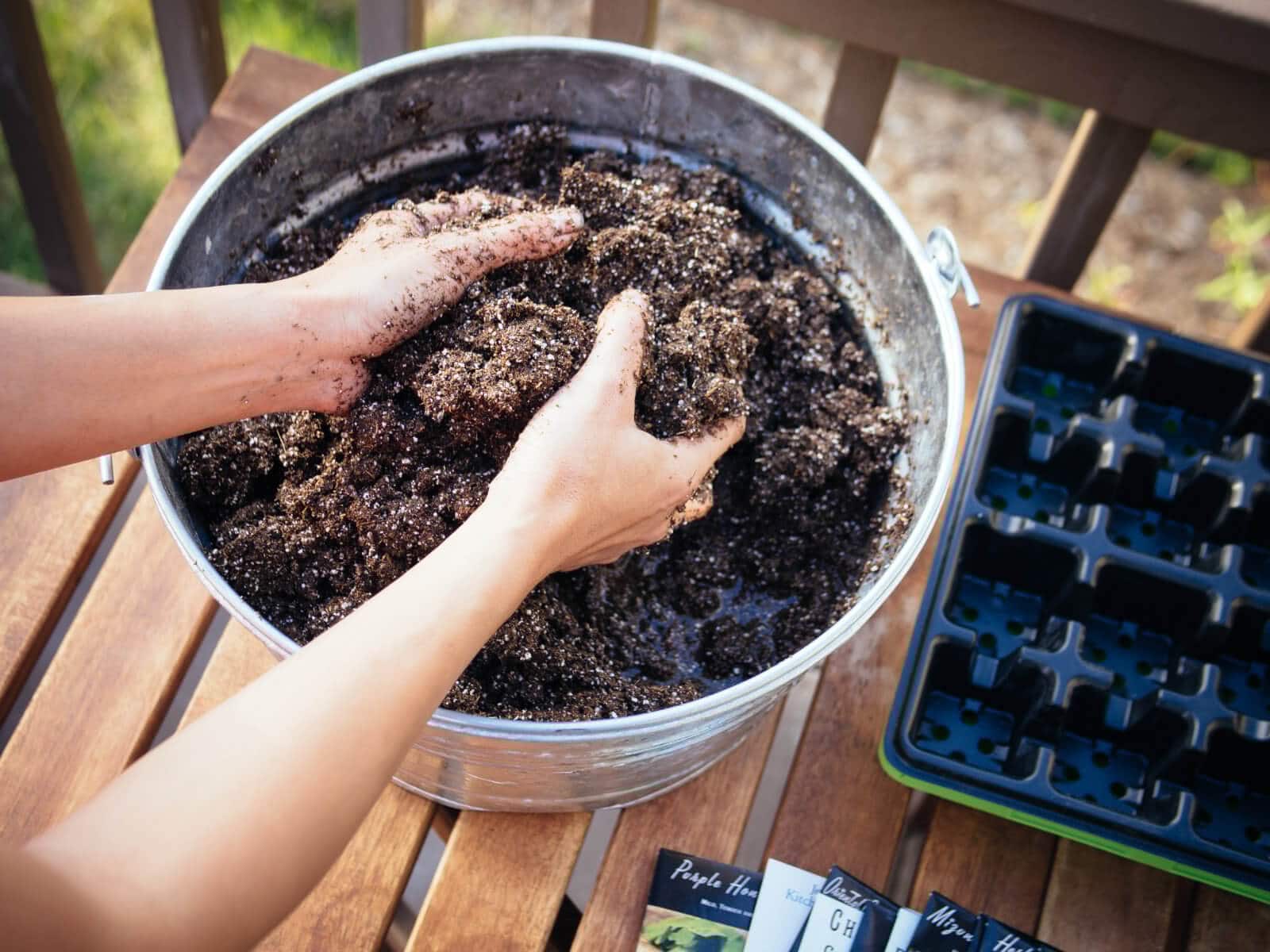
First things first, you need to prepare well-draining and rich soil in organic matter.
If your soil isn’t up to par, don’t worry! You can always mix in some compost or well-rotted manure to give it a boost.
Step 2: Starting Seeds Indoors
You can start your bell pepper seeds indoors about 8-10 weeks before the last frost date.
You should use a seed-starting mix and plant the seeds about 1/4 inch deep, then keep the soil moist but not waterlogged.
A humidity dome can help keep the moisture in, but if you don’t have one, a simple plastic wrap will do the trick.
After that, you only need to place the seed trays in a warm spot, around 70-80°F.
Step 3: Hardening off Plants
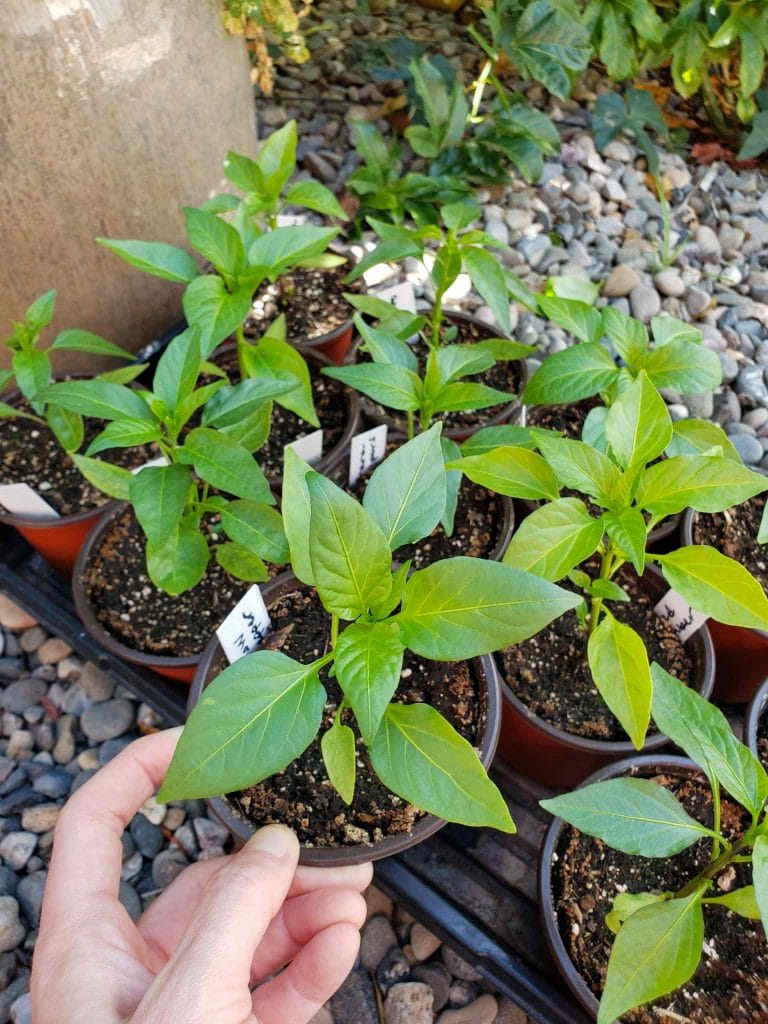
Once your seedlings have sprouted and grown a few inches tall, it’s time to toughen them up. This process is called hardening off.
About two weeks before you plan to transplant them outside, start placing the seedlings outdoors for a few hours each day.
This step is crucial to prevent transplant shock.
Step 4: Transplanting

When the danger of frost has passed and your seedlings are about 4-6 inches tall, it’s time to move them to their permanent home.
Now, dig holes in your prepared garden bed, spaced about 18-24 inches apart.
Then, carefully remove the seedlings from their pots, trying not to disturb the roots too much, and place them in the holes.
Step 5: Care for Bell Pepper Plants
You should water them regularly, aiming for about 1-2 inches of water per week. Be consistent with your watering to avoid issues like blossom-end rot.
In addition, mulching around the plants can help retain moisture and keep weeds at bay.
As the plants grow, you might need to stake them to keep them upright.
And don’t forget to pinch out the growing tips when the plants are about 8 inches tall to encourage bushier growth and more fruit production.
Step 6: Harvest and Preservation Bell Peppers
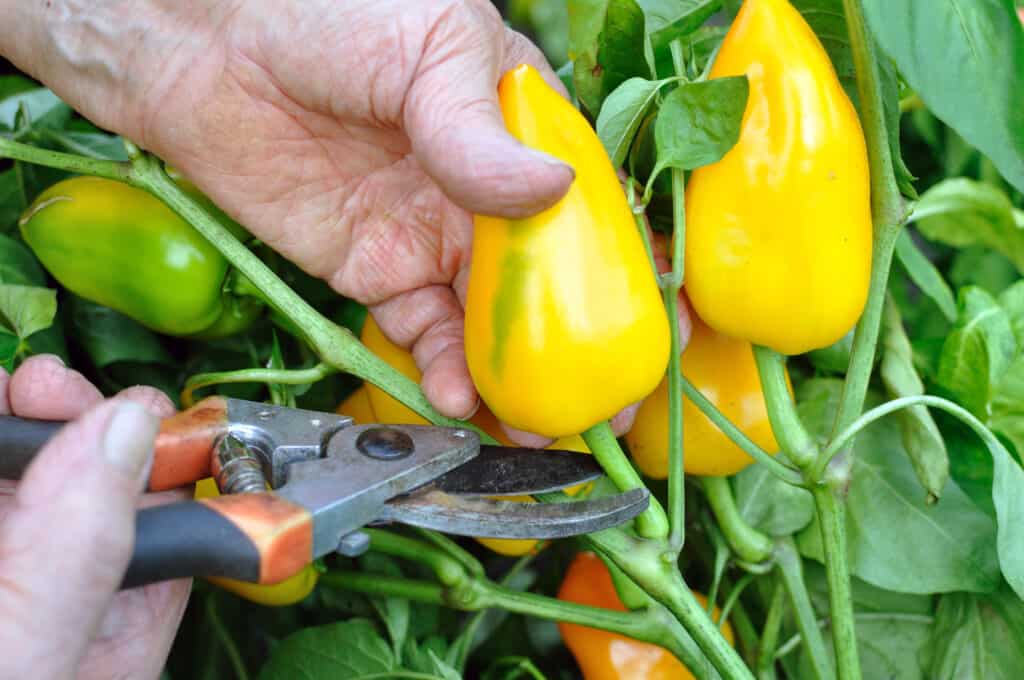
The longer you leave bell peppers on the plant, the sweeter they become and the more vitamin C they pack.
If you want those extra nutrients, let them stay on the vine a bit longer.
When harvesting, use sharp scissors or pruners to snip them off. Store bell peppers in the fridge for up to 10 days in a plastic bag.
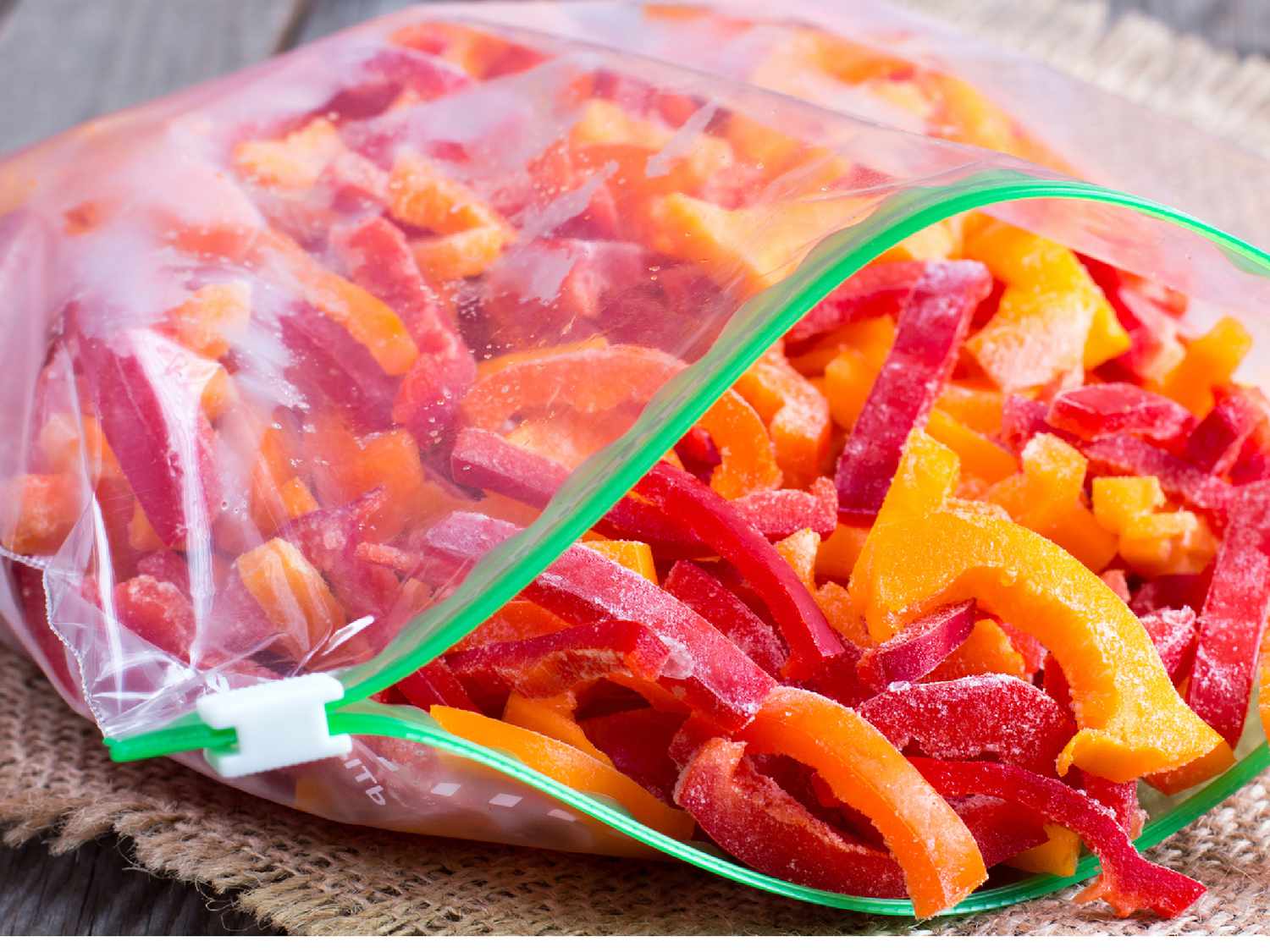
For longer storage, freeze them by washing, coring, and slicing, then freezing on a baking sheet before transferring to a freezer bag.
You can also dry them by slicing, steaming, and drying in the oven at 140°F for 4 to 6 hours, then store in an airtight container.
Health Benefits Of Bell Peppers
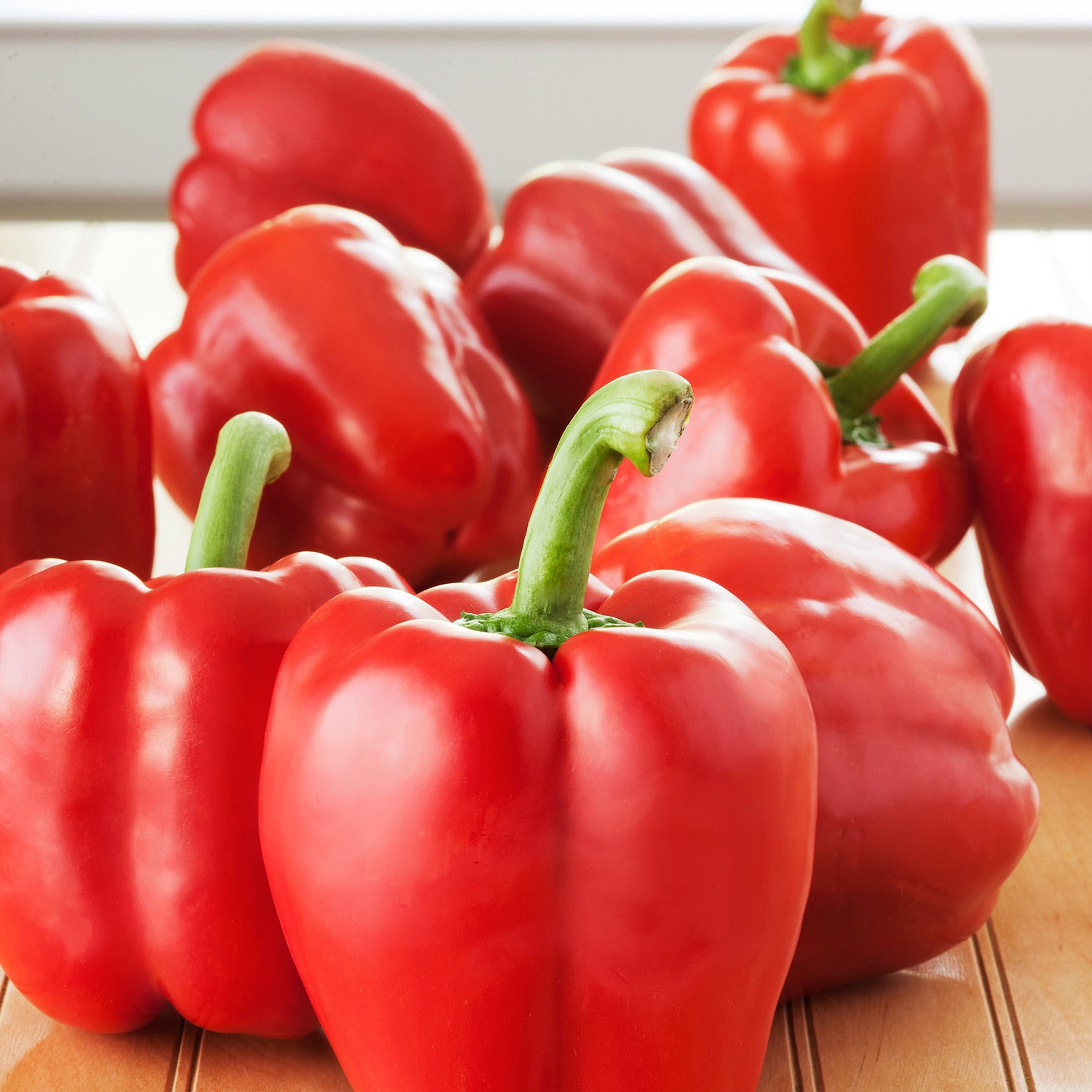
Red bell peppers have more vitamin C than oranges.
This vitamin is essential for your immune system, skin health, and even helps in the absorption of iron from other foods.
Another fantastic benefit is their antioxidant content. Bell peppers are loaded with antioxidants like beta-carotene, which your body converts into vitamin A.
This is great for your vision and overall eye health. Plus, these antioxidants help fight off free radicals, which can damage your cells and lead to chronic diseases.
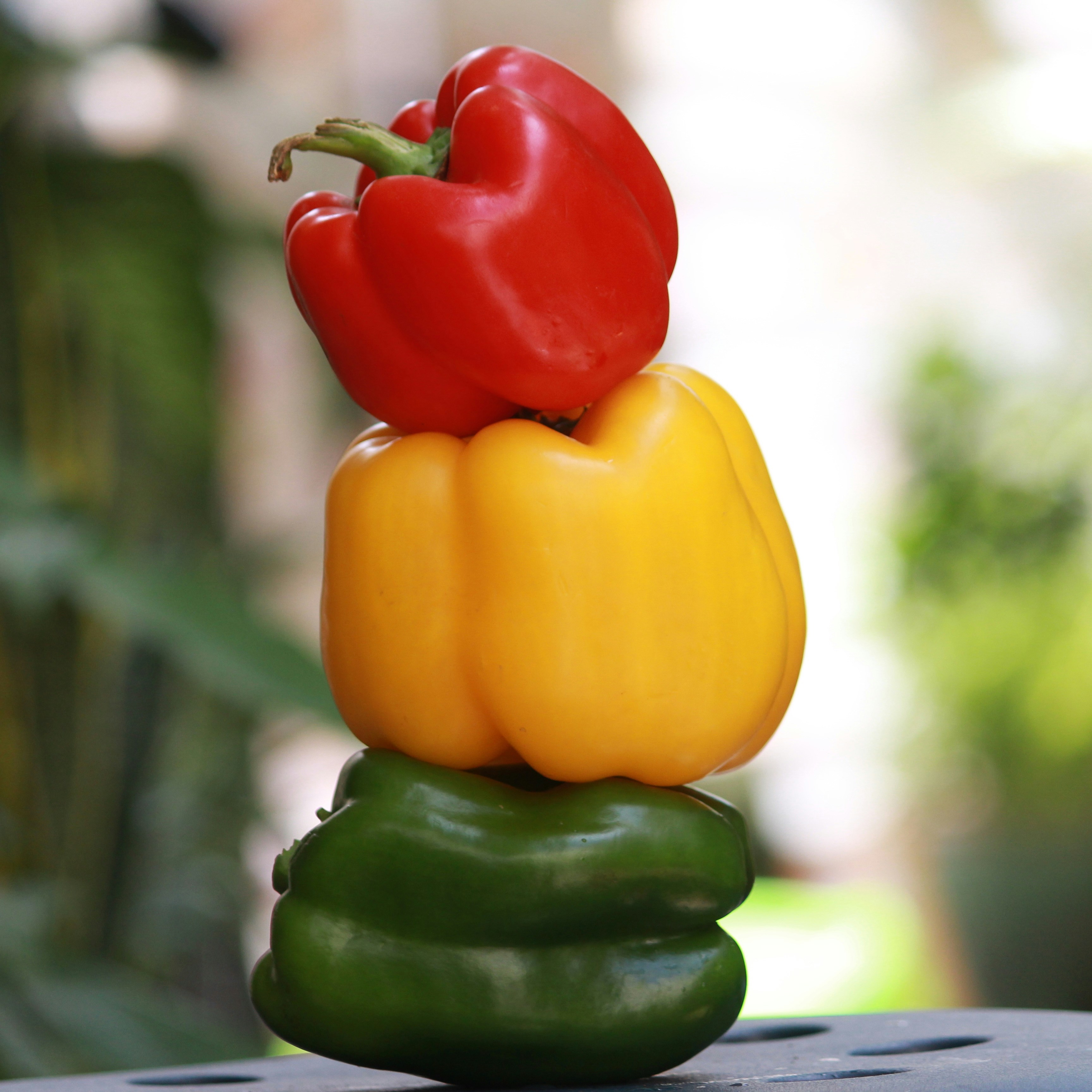
Bell peppers are also low in calories but high in fiber. This makes them an excellent choice if you’re looking to maintain or lose weight.
The fiber content helps keep you full longer, reducing the urge to snack on less healthy options.
Lastly, these peppers contain a good amount of B vitamins, particularly B6, which is crucial for brain health and mood regulation.
So, adding bell peppers to your diet can help keep your mind sharp and your mood stable.
Bell Pepper Recipes
Stuffed Bell Peppers with Quinoa and Black Beans
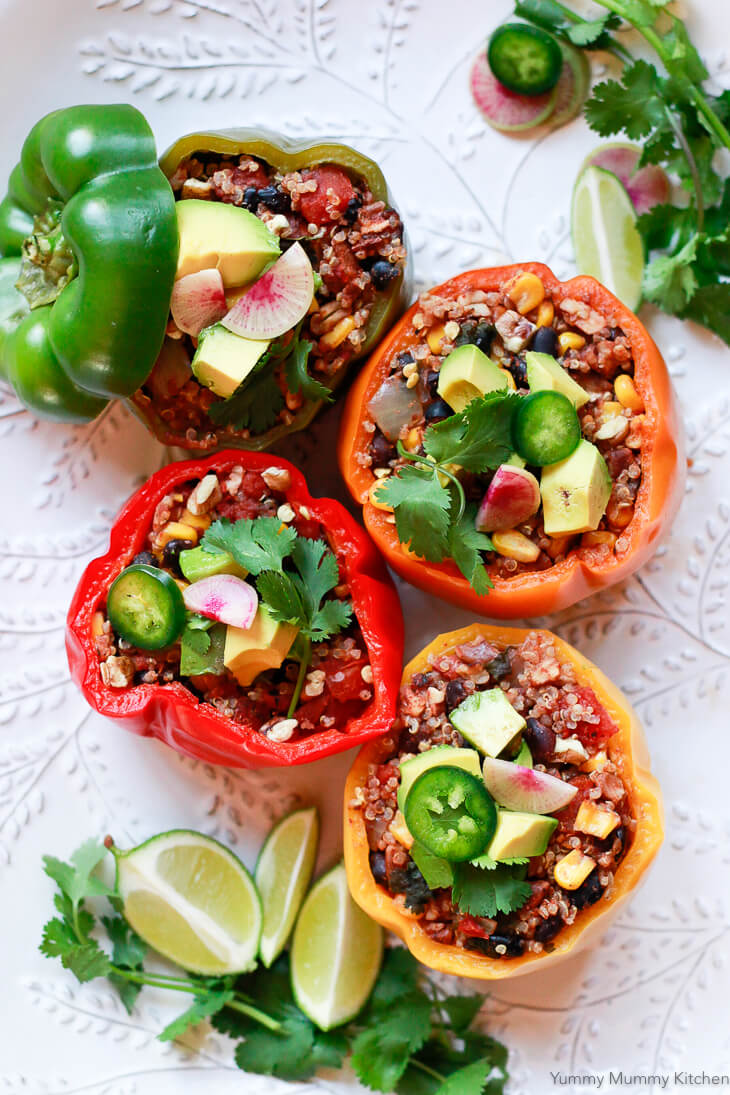
Ingredients:
- 4 large bell peppers (any color)
- 1 cup quinoa
- 2 cups vegetable broth or water
- 1 can (15 oz) black beans, drained and rinsed
- 1 cup corn kernels (fresh, frozen, or canned)
- 1 cup diced tomatoes
- 1/2 cup chopped onion
- 2 cloves garlic, minced
- 1 teaspoon cumin
- 1 teaspoon paprika
- 1/2 teaspoon chili powder (optional)
- 1/2 cup shredded cheese (cheddar, Monterey Jack, or your choice)
- 2 tablespoons olive oil
- Salt and pepper to taste
- Fresh cilantro or parsley for garnish (optional)
Instruction:
Step 1: Set your oven to 375°F (190°C).
Step 2: Rinse quinoa under cold water. In a medium pot, bring 2 cups of vegetable broth or water to a boil.
Then, add quinoa, reduce heat to low, cover, and simmer for 15 minutes until quinoa is cooked and liquid is absorbed. Fluff with a fork.
Step 3: In a large skillet, heat olive oil over medium heat. Sauté onions and garlic until softened, about 3 minutes.
Add diced tomatoes, black beans, corn, cumin, paprika, chili powder (if using), salt, and pepper. Cook for 5 minutes, then stir in cooked quinoa.
Step 4: Cut the tops off the bell peppers and remove seeds and membranes. If necessary, trim the bottoms slightly to keep them upright, but be careful not to cut through.
Step 5: Spoon the quinoa mixture into each bell pepper, packing it in firmly. Place stuffed peppers in a baking dish.
Step 6: Cover the baking dish with foil and bake for 30 minutes.
Remove foil, sprinkle shredded cheese on top of each pepper, and bake uncovered for an additional 10 minutes, or until peppers are tender and cheese is melted.
Roasted Bell Pepper Soup
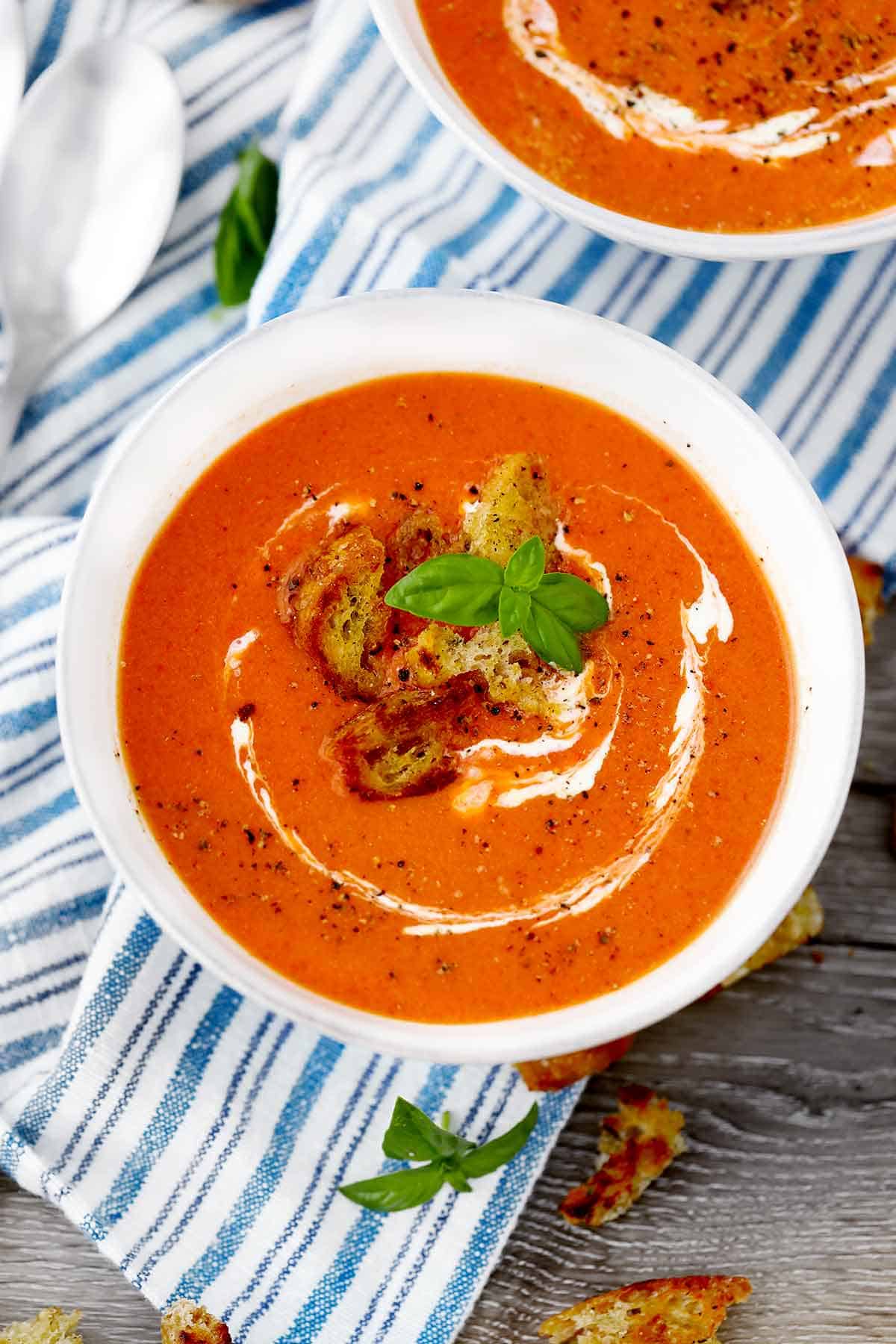
Ingredients:
- 6 large bell peppers (mixed colors for variety)
- 1 large onion, chopped
- 4 cloves garlic, minced
- 1 large carrot, peeled and diced
- 1 celery stalk, diced
- 4 cups vegetable or chicken broth
- 1 can (14.5 oz) diced tomatoes
- 2 tablespoons olive oil
- 1 teaspoon dried basil
- 1 teaspoon dried oregano
- Salt and pepper to taste
- 1 tablespoon balsamic vinegar (optional)
- Fresh basil for garnish
Instruction:
Step 1: Preheat your oven to 450°F (230°C). Cut the bell peppers in half and remove seeds. Place them cut-side down on a baking sheet lined with parchment paper.
Roast for 20-25 minutes, or until the skins are charred and blistered. Let them cool, then peel off the skins and chop the peppers.
Step 2: In a large pot, heat olive oil over medium heat. Add chopped onion, garlic, carrot, and celery. Sauté for 5-7 minutes until the vegetables are tender.
Step 3: Add the chopped roasted bell peppers, vegetable or chicken broth, diced tomatoes, basil, oregano, salt, and pepper to the pot. Stir to combine and bring to a boil.
Step 4: Reduce heat and let the soup simmer for 20 minutes to meld the flavors.
Step 5: Use an immersion blender to puree the soup until smooth. Alternatively, carefully transfer the soup in batches to a blender.
Step 6: Stir in the balsamic vinegar if using, and adjust seasoning to taste. Garnish with fresh basil before serving.
